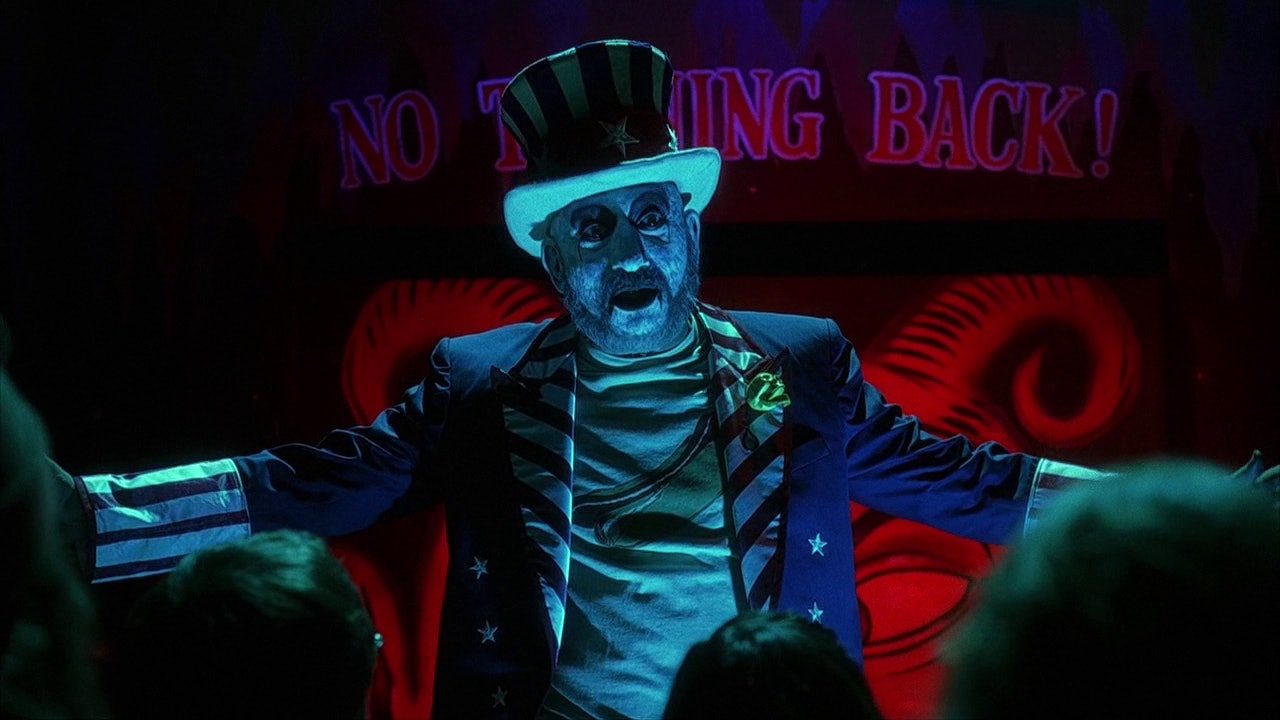
Some of the greatest horror films are the ones that abandon the comfort and cleanliness of traditional narrative structure. While the satisfying logic of a story can make or break any movie, horror has always used the idiosyncrasies of film to deliver experiences far more visceral.
Consider The Texas Chain Saw Massacre, a revolutionary film for American cinema. At face value, it’s little more than a nihilistic slaughterfest with an audiovisual quality that feels like sandpaper and barbed wire. But Tobe Hooper packed a decade’s worth of political and existential anxieties into what functionally amounts to an X-rated haunted house, which is why it’s so fitting that its greatest successor began as a real-life one.
At the turn of the century, nu-metal artist Rob Zombie was determined to expand his Hellbilly aesthetic beyond music. After channeling his adoration of horror into a hugely successful haunted maze at Universal Studios, he began work on another attraction that he eventually leveraged into a horror movie based on nothing more than the name: House of 1000 Corpses. True to that image, Zombie’s directorial debut is an abrasive exercise in vulgarity and depravity, a black-hearted love letter to Tobe Hooper and the spirit of ‘70s sleaze with a fascinating perspective on America’s sensational history of violence.
Although production initially wrapped in late 2000, Universal shelved the project after early test screenings, terrified of the death knell of an NC-17 rating. It wasn’t until Zombie bought the rights back that the film saw the light of day three years later, although contemporary critics and audiences wished it hadn’t emerged at all. Just like its inspiration, House of 1000 Corpses follows the simplistic yet brutal murders of a group of cross-country sightseers by a psychotic Texas family, but Zombie’s burgeoning style of vulgar auteurism was seen as an affront to the post-Scream landscape of early 2000s horror.
Growling to life from opening credits set to Zombie’s own song, House of 1000 Corpses actively fights against enjoyment. It’s not a slasher movie so much as it’s an extended, hellish torture sequence, one criticized as misogynistic, senseless, and tasteless. The brutal violence and distinct Southern vulgarity that would become synonymous with Zombie’s name runs throughout the film, but so does a free-spirited experimental sensibility. The film is prone to fits of frenzied editing, assaulting you with duplicating cuts, acid-bleached coloring, and surrealist vignettes that have nothing to do with the unfolding story. It feels overwhelming, but it settles into a formless rhythm akin to a debauched music video.
Frustrated by the teenage melodrama that dominated much of the genre’s prior decade, Zombie wisely chose to give his villains the majority of the screen time, a decision that resulted in cult acclaim. The Firefly Clan is one of the most sadistic pack of murderers ever put to screen, a dysfunctional family from Hell whose idea of bonding is a quadruple homicide. With an impeccable roster of character actors that includes Karen Black, Bill Moseley, Sid Haig, and the director’s wife, Sheri Moon Zombie, Rob evokes an instantly recognizable caricature of Southern vulgarity and familial domesticity.

It’s fascinating that this familiar cultural perspective is what the movie uses to make us empathize with the Fireflys over the insufferable yet ultimately innocent teenagers they kidnap and torture. From the moment Jerry (Chris Hardwick) and Bill (Rainn Wilson) stop at Captain Spaulding’s Museum of Monsters and Madmen, the movie suggests these visitors are not just looking down on Captain Spaulding’s (Sid Haig) business, but an entire way of life.
The Fireflys and their wounded pride feel reminiscent of the Lost Cause sentimentalism that often serves as the backbone for Southern political rhetoric. The myth of Northern aggression and heroic Southern nobility has led to generations of resentment and cultural self-destruction and, at times, it feels like House of 1000 Corpses is drawing a direct lineage from America’s original sin and the South’s denialist aftermath to the surrealist bloodshed exacted by the Fireflys. As Zombie sings in the opening credits, “This is the House built on sin.”

In fact, one could argue the entire movie is a treatise on the relationship between historical American violence and sensational brutality in entertainment. Before those hapless teenagers are sent off to be carved up, Captain Spaulding takes them on his main attraction: the Murder Ride. In it, he lists off some of the most notorious killers in American history: Albert Fish, Lizzie Borden, Ed Gein (the inspiration for The Texas Chain Saw Massacre), before circling back to Dr. Satan, the local urban legend of a crazed doctor-turned-killer who was hanged for committing atrocities on his patients.
It’s this spark of information that sends those teenagers looking for Dr. Satan, only to find the Fireflys instead. And as they eventually discover, it was never just a legend. House of 1000 Corpses ends with a harrowing descent deep into the Earth, a visceral journey that brings us face to face with the infamous killer in all his horrific, nightmarish glory. Like Spaulding’s Murder Ride, the movie weaves its way through the violence of American history to become a horrific madhouse reflection of our obsession with sensationalized savagery.







